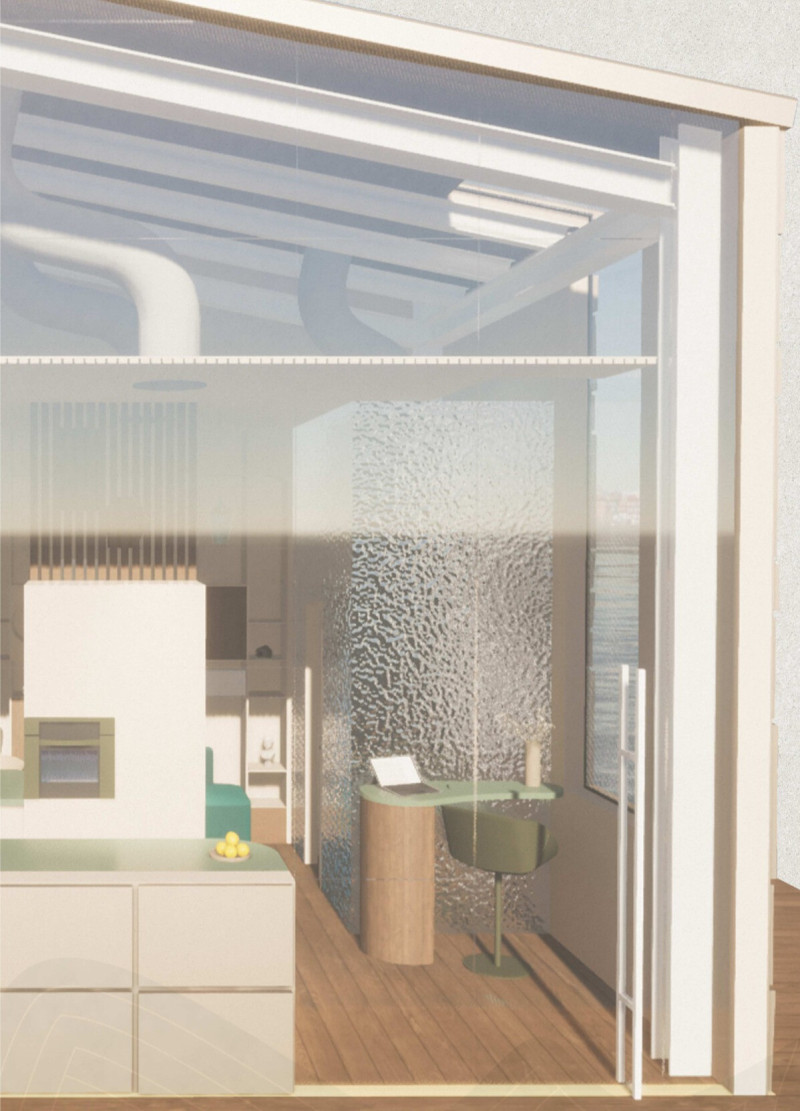5 key facts about this project
The architecture of the project emphasizes transparency and connection to the outdoors. Expansive glass facades invite natural light into the interior, promoting an inviting atmosphere that enhances the user experience. This integration of natural elements is a conscious design choice aimed at bridging the indoor and outdoor spaces, creating a seamless flow that encourages interaction with the environment. The material palette includes sustainably sourced materials such as timber, steel, and concrete, each carefully selected for its durability and aesthetic properties. This deliberate choice not only contributes to the building's longevity but also reflects a commitment to environmental responsibility that is increasingly pertinent in today’s architectural discourse.
Important details of the project include its carefully designed circulation pathways, which lead users intuitively through the space. The layout thoughtfully considers how people will move through the building, providing clear sight lines and easy navigation. The strategic placement of communal areas fosters engagement among users, encouraging spontaneous interactions and creating a sense of community within the architectural framework. Attention to acoustic comfort has also been prioritized, ensuring that spaces accommodate both active use and quiet reflection.
The project showcases unique design approaches that distinguish it from conventional solutions. One notable feature is the incorporation of biophilic design elements, which draw inspiration from nature to improve the well-being of the building's occupants. Living walls and strategically placed greenery not only enhance the aesthetic quality of the design but also serve to purify the air and improve indoor climate conditions. This consideration of environmental psychology demonstrates a forward-thinking approach that acknowledges the profound impact of architectural design on human experience.
Another remarkable aspect of the project is its flexible use of spaces. The design accommodates a variety of activities, allowing for adaptability as the needs of the community evolve over time. This adaptability is a fundamental consideration in modern architectural practice, recognizing that spaces must remain relevant and functional amid changing social dynamics and user requirements.
In addition to these features, the project emphasizes sustainability through energy-efficient systems and renewable technologies. Features such as green roofing systems facilitate stormwater management while also providing insulation, showcasing a holistic approach to sustainability that intertwines both environmental and economic considerations. This focus on long-term viability not only meets current needs but also anticipates future challenges, reflecting a responsible approach to resource management.
Ultimately, this project stands as a testament to thoughtful architectural design that thoughtfully integrates modern techniques, sustainability, and human-centered principles. The careful consideration of materials, interior layouts, and environmental impact speaks to the project’s commitment to enhancing the quality of life for its users and fostering a connection to the surrounding context. For those interested in a deeper understanding of the architectural plans, sections, and innovative design strategies employed, exploring the project presentation will provide valuable insights into the architectural ideas that underpin this comprehensive endeavor.


 Aurora Maria Naddeo,
Aurora Maria Naddeo, 























